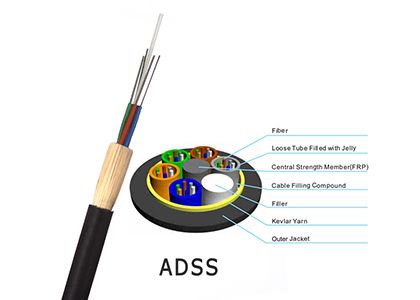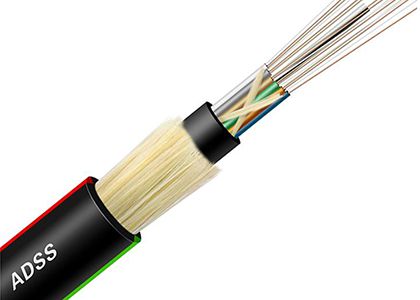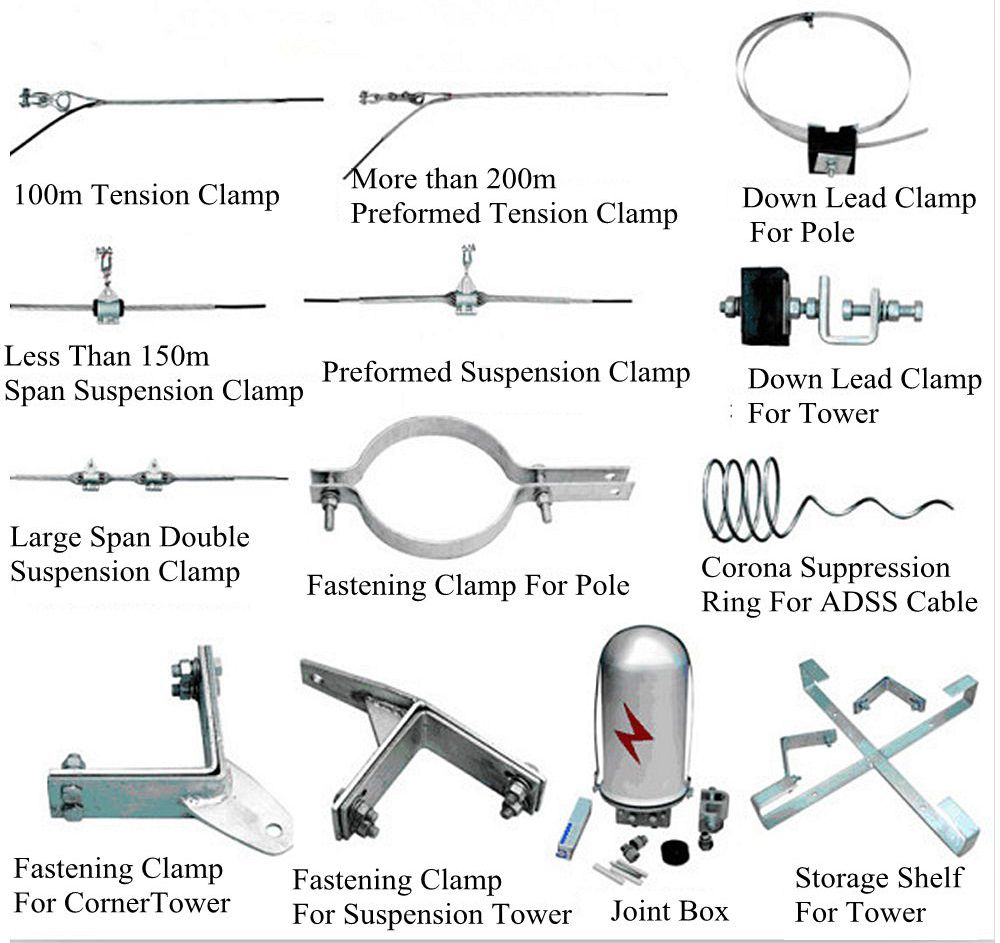Many Years of manufacturing Self-supporting Fiber Cable, 2-144 core is available, support OEM. Aerial Self-supporting Figure 8 GYXTC8S/GYTC8S Self-supporting Fiber Cable 24 48 96 144 288 Core. Quality Fiber Optic cable. 80 innovative technicians. Many Years Manufacturer. 20 production lines.
ADSS (All-Dielectric Self-Supporting) cable is a type of fiber optic cable specifically designed for use in outdoor applications where aerial installation is required. It is widely used in telecommunications and power utility industries due to its high tensile strength and excellent weather resistance. This professional technical description will provide an overview of the ADSS cable, including its technical parameters, usage, construction precautions, and more.

Technical Parameters:
Fiber Count: The ADSS cable is available in various fiber counts, ranging from 12 to 288 fibers. The fiber count determines the capacity of the cable to carry data.
Cable Diameter: The diameter of the ADSS cable varies depending on the fiber count. Typically, it can range from 9 to 14 mm, with larger diameter cables capable of accommodating more fibers.
Tensile Strength: ADSS cables have high tensile strength, usually exceeding 10kN. The tensile strength determines the maximum load the cable can bear without breakage during installation or operation.
Span Length: The ADSS cable can be installed over long distances without requiring intermediate support structures. The span length can range from 50 to 1000 meters, depending on the specific cable design and installation conditions.

Usage: ADSS cables are predominantly used in the following applications:
Telecommunications: ADSS cables are used to provide high-speed and high-bandwidth connectivity in telecommunications networks, including long-haul, metropolitan, and local access networks. These cables enable the transmission of vast amounts of data over long distances with minimal signal loss.
Power Utility: ADSS cables are commonly deployed along power transmission lines to establish reliable communication networks for monitoring and control purposes. These cables support the integration of communication systems, such as SCADA (Supervisory Control and Data Acquisition), to monitor power grid performance and enhance system reliability.
Construction Precautions: During the construction process, several precautions should be taken to ensure the successful installation and optimal performance of ADSS cables:
Proper Tension Control: ADSS cables require controlled tension during installation to prevent excessive bending and stress. Improper tension can lead to signal degradation or even cable failure. Hence, it is essential to use specialized tensioning equipment and follow the recommended tensioning guidelines provided by the cable manufacturer.

Clearance Requirements: ADSS cables should maintain specific clearance distances from other power lines or conductive structures to avoid electrical interference. Adhering to these clearance requirements is crucial to ensure the safety of personnel and to maintain the integrity of the cable's electrical performance.
Installation Environment: ADSS cables should be installed carefully in accordance with the environmental conditions. Steps should be taken to protect the cable from excessive UV radiation, extreme temperatures, ice or wind loads, and potential damage from animals or vegetation. Follow the manufacturer's guidelines for cable installation to ensure optimal performance and longevity.
Proper Cable Handling: ADSS cables should be handled with care during transportation, storage, and installation. Improper handling can damage the cable core, resulting in signal degradation or complete failure. Handling should be carried out by trained personnel and in accordance with the guidelines provided by the cable manufacturer.
Conclusion: ADSS cables offer excellent performance and reliability for outdoor installations that require aerial fiber optic connectivity. These cables have varying technical parameters, such as fiber count, cable diameter, tensile strength, and span length, providing flexibility in different applications. However, it is crucial to follow construction precautions, including proper tension control, clearance requirements, installation environment considerations, and appropriate cable handling, to ensure successful installation and optimal performance of ADSS cables.



